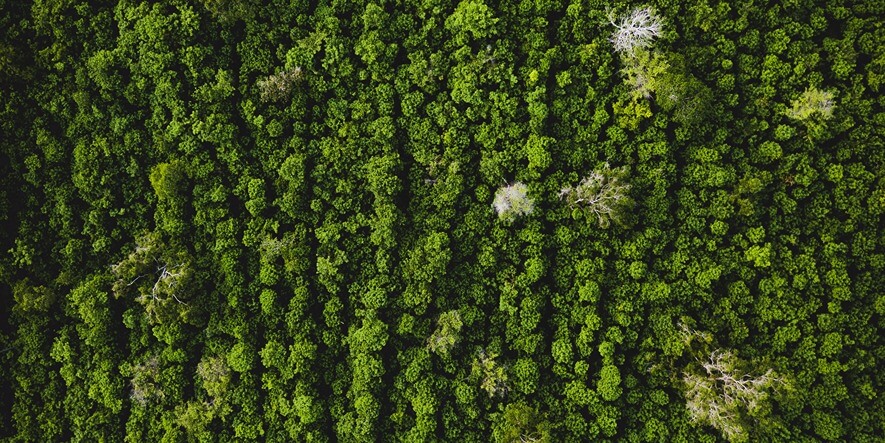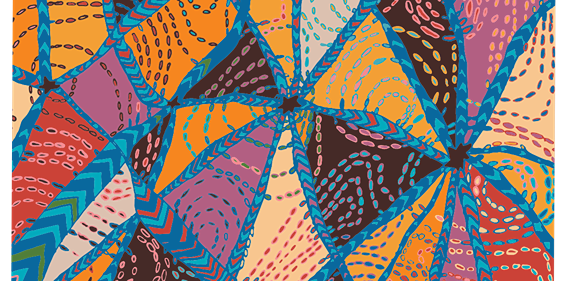As the climate crisis reaches our own doorstep, the sense of eco-anxiety can be overwhelming.
If there is one thing we have learnt through the phenomenon of a pandemic and natural disasters of flood and fire, it is that a strong connection to place and nature, and a sense of community cohesion and resilience, is integral to our health and wellbeing.
Recent studies on the impact of nature on humans’ wellbeing show that spending at least two hours in nature, per week, is strongly associated with self-reports of being in good health and having high wellbeing. Further research indicates that if you spend as little as 10-20 minutes sitting or walking in green spaces, this can have a meaningful impact in reducing stress, anger, anxiety, and in increasing vigour, comfort, positive affect, and a sense of feeling refreshed.
The World Health Organisation in its Urban Green Spaces and Health report of 2016 references green space as directly contributing to physical health including improved air quality, increased physical activity, and stress reduction. Just as important is the impact that green spaces have on communities, enhancing a sense of cohesion and resilience as people deal with natural disasters or extreme weather events.
As climate change continues to unfold on our own front doorsteps, experts and philosophers alike are predicting a new wave of ‘homesickness’ – or intense melancholia – felt while still at home. It’s a phenomenon that occurs as we observe our home environments changing in distressing ways that feel beyond our control. And it comes as a direct result of a period of time which has been labelled the Anthropocene.
Living in the Anthropocene
One of the greatest challenges to our health and happiness is the climate crisis arising as a result of the Anthropocene. The Anthropocene is an unofficial classification of a period of time when human activity started having a significant impact on the planet’s climate and ecosystems. It’s also referred to as the Age Of Humans: the current geological epoch, marked by significant human impact on the environment, resulting in climate change, habitat destruction, and species extinction.
Most notably, the Anthropocene is characterised by a worldview that separates humans from nature and sees the planet as a resource to be exploited for human use.
Realising that the crisis is on our doorstep
The climate crisis has, for too long, been viewed as a bad luck phenomenon that is happening ‘over there’ but never ‘here’. As Dr Simone Thornton, a Lecturer of Philosophy in the School of Humanities and Social Inquiry at the University of Wollongong, points out.
“We’re really coming to see that we are part of the global community [and that] the things we do matter for us and to people we never see or interact with,” says Dr Thornton.
This comes as a shock to many people as it’s not been on their radar. It brings up questions of mortality and existential dread, worry about the future, worry about our children’s future
Dr Simone Thornton, a Lecturer of Philosophy in the School of Humanities and Social Inquiry at the University of Wollongong
This dawning realisation is only just now coming into view as our own homes and local ecosystems are being critically affected by natural and man-made disasters.
The rise of eco-anxiety
This contemplation of our very purpose in life, how we should live, and how we should interact with our environment has had significant impacts on our mental health and wellbeing. Dr Glenn Albrecht, a professor of sustainability and an Australian environmental scholar, describes a state of eco-paralysis as the “detachment of response and action” in which people appear apathetic or disengaged with reality as it unfolds. And as climate crisis reaches closer to home he has observed in people, emotional conditions of eco-anxiety, global dread (the feeling that there is only bad news in the world), a sense of dislocation from our home environment, and ‘solistaglia’: in which we no longer gain solace from our home environment, and feel desolate about the loss of our loved home environment.
As Dr Thornton highlights, we must all have courage. “When we look back at history, at major conflicts and human struggle, courage is at the heart of our motivation to continue,” she points out. And, as Associate Professor Roger Patulny and Dr Jordan MacKenzie note in their work on climate anxiety, climate histories encompass both pessimistic and optimistic attitudes, and that “action, resilience and hope” define the latter.
“Traditionally there has been a narrative that individuals are solely to blame for climate change, but that’s not the case. Climate change is often thought of as a global problem too big to solve, but it is caused by local problems, and it is the undoing of those local problems that is important, collectively,” says Dr Thornton.
Undoing the damage through Symbiocene
Dr Albrecht refers to the state of ‘Symbiocene’, in direct reverse of the Anthropocene, in which humans might live in greater harmony and interconnectedness with nature. It’s a radical rethink on how we currently live with nature, and a shift in thinking that requires us to view our relationship with nature and the environment as mutually beneficial.
“The Symbiocene is a meme that represents the very opposite of the period of human dominance known as the Anthropocene,” writes Dr Albrecht for The Ecologist (8 March 2019). “The new meme has been created to achieve nothing less than complete change of the biophysical and emotional foundations of society from the ecocidal to the symbiotic, from the destructive to the nurturing. While the Anthropocene is generating despair and desolation, the Symbiocene gives generously of hope and optimism,” he writes.
Many of our country's politicians and parliamentarians hold degrees in humanities, notes Dr Thornton. And it’s here, in education – where we acquire skills of critical and cooperative thinking, communication and negotiation – that the necessary shift in thinking is taking place.
Shifting perspectives and building climate resilience
The University of Wollongong was the third university in Australia to offer a Bachelor of Arts majoring in Environmental Humanities. It’s a “quietly powerful” degree, diverse and interdisciplinary, says Dr Thornton. And importantly recognises international and local Indigenous perspectives as being integral to recentring our relationship with the natural world.
“The Environmental Humanities major of the Bachelor of Arts degree looks at how we should live, how the jobs we do now contribute to environmental degradation and what the jobs of tomorrow will look like.” Not only that but the global ethics and impacts of the seemingly small choices we make on a daily basis. Students break down the big picture problems in digestible ways, face difficult conversations with themselves and their peers, and begin to unknit the Anthropocene attitudes upon which a Symbiocene world cannot exist.
“[The degree is] increasingly important when we are facing an increasingly uncertain world. We don’t know what the employment landscape will be like. In the face of climate change, we need to be able to mitigate, solve problems, and adapt to a future that will look different to what we are living in now,” says Dr Thornton.
Younger generations rise up
Within local NSW communities, initiatives funded by AdaptNSW and its Increasing Resilience to Climate Change grants, are making real headway at a grassroots level. The Joyality Project in particular is engaging with young people experiencing eco anxiety and giving them the tools to practice climate resilience and support those around them to do the same.
“Our emotional responses to climate change are healthy reactions to an unhealthy state of the world. Learning how to engage with our emotions can empower us to take positive action,” says Dr Eshana Bragg, an ecopsychologist and Director of The Joyality Project.
Participants in The Joyality Project’s leadership program (which upskills local youth leadership between the ages of 14 and 25 in understanding climate change and practicing resilience) have gone on to lead local communities during the devastating floods; host radio shows and interview change makers; and lead climate activism in schools.
While the challenge is global and the demands of the climate crisis often seem insurmountable, it comes back to the individual and importantly our community to enact change at a local level. “Research shows, to cause societal change, you need a shift in 3.5 per cent of the population,” says Dr Thornton. “When you put it like that, it doesn’t seem so unachievable.”
Continue researching climate resilience by visiting the AdaptNSW website, and explore options for supporting your local community in building climate resilience with AdaptNSW’s community grants.
Join the conversation in 2023 for two days of discovery, collaboration and innovation from 4-5 December. Register today for the 2023 AdaptNSW Forum.


